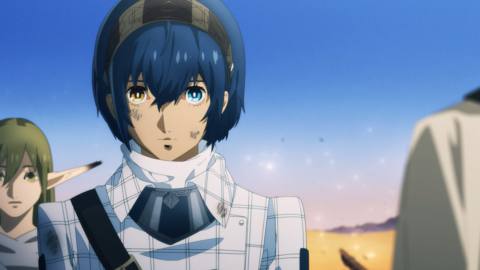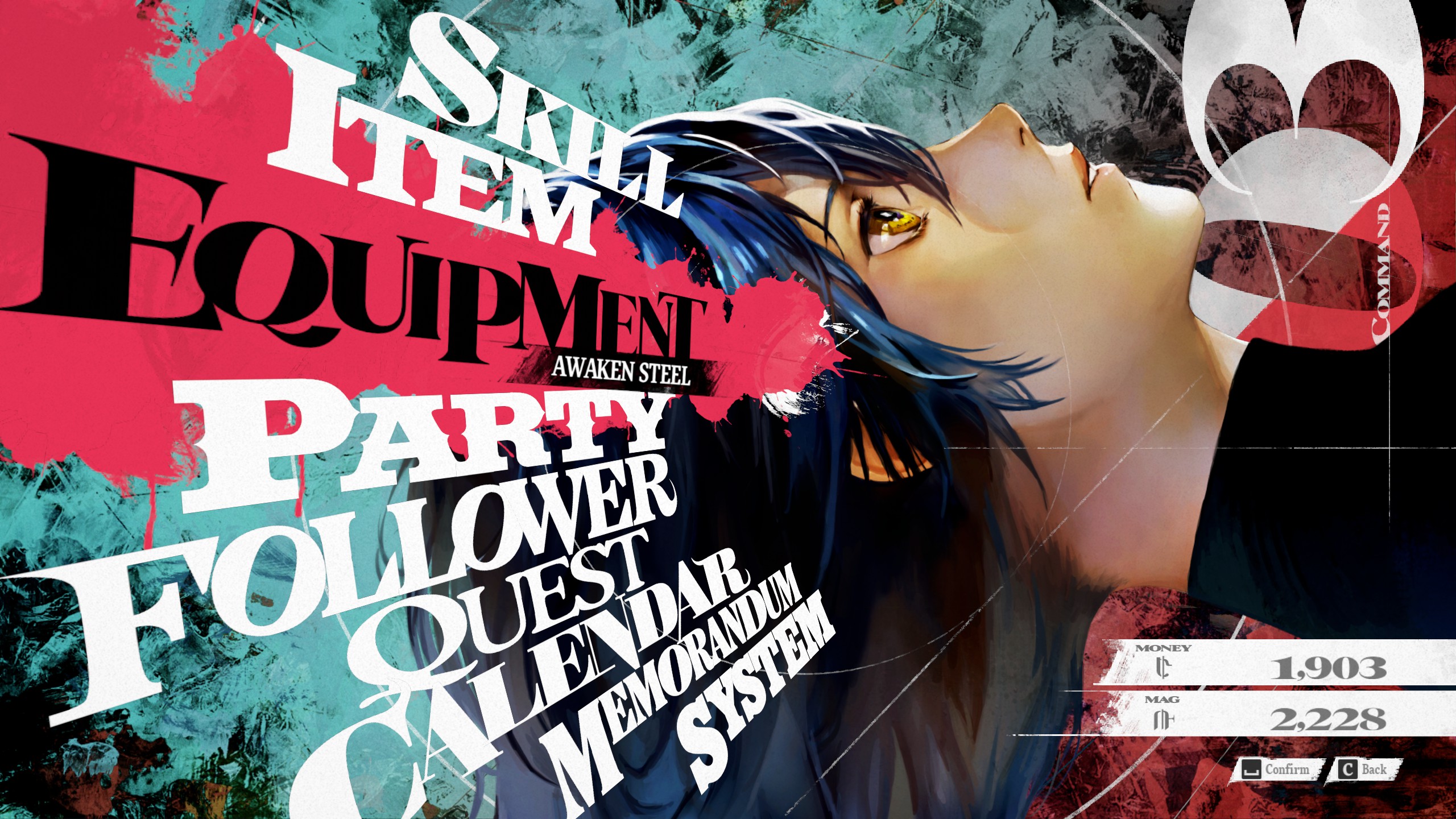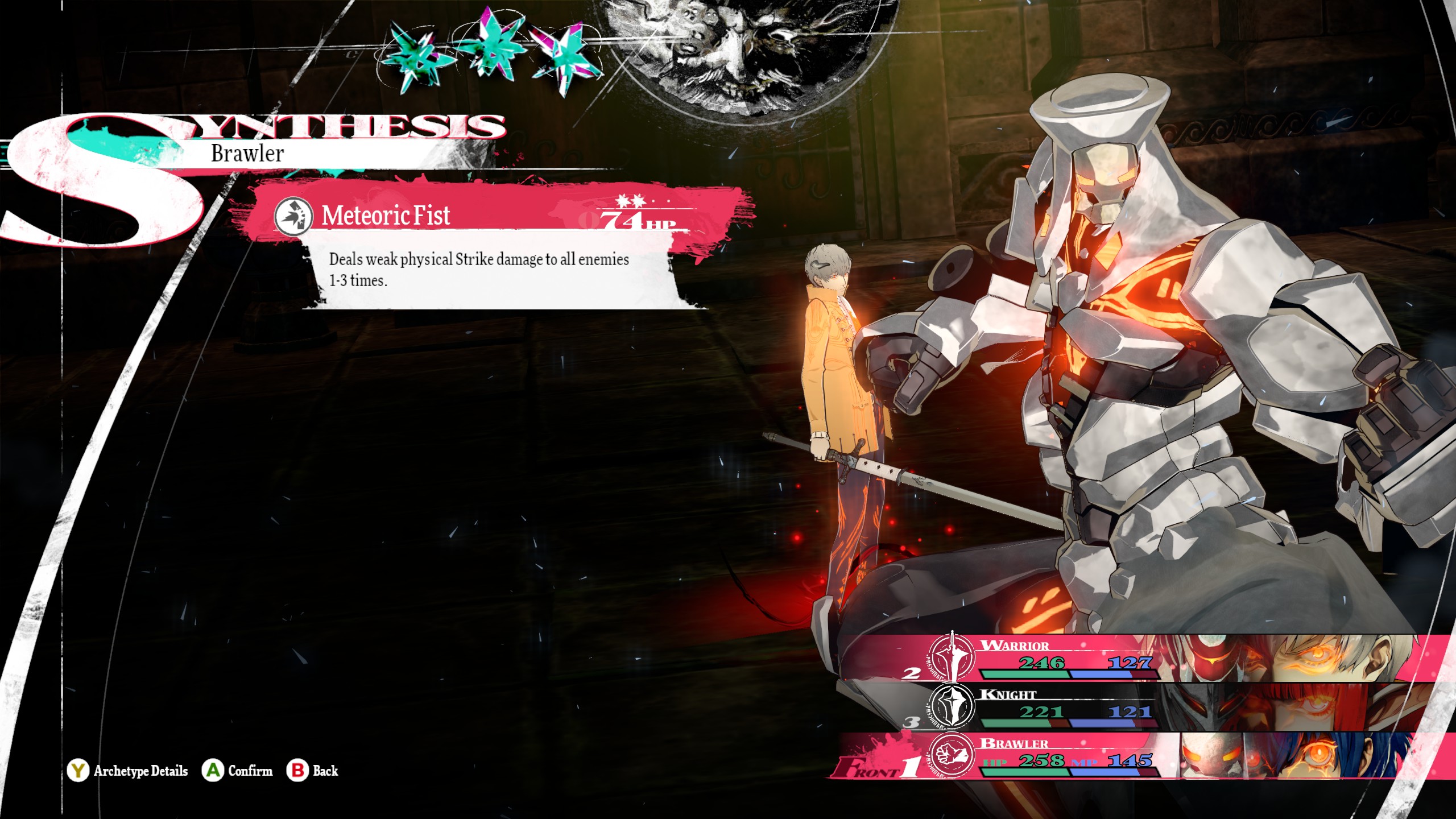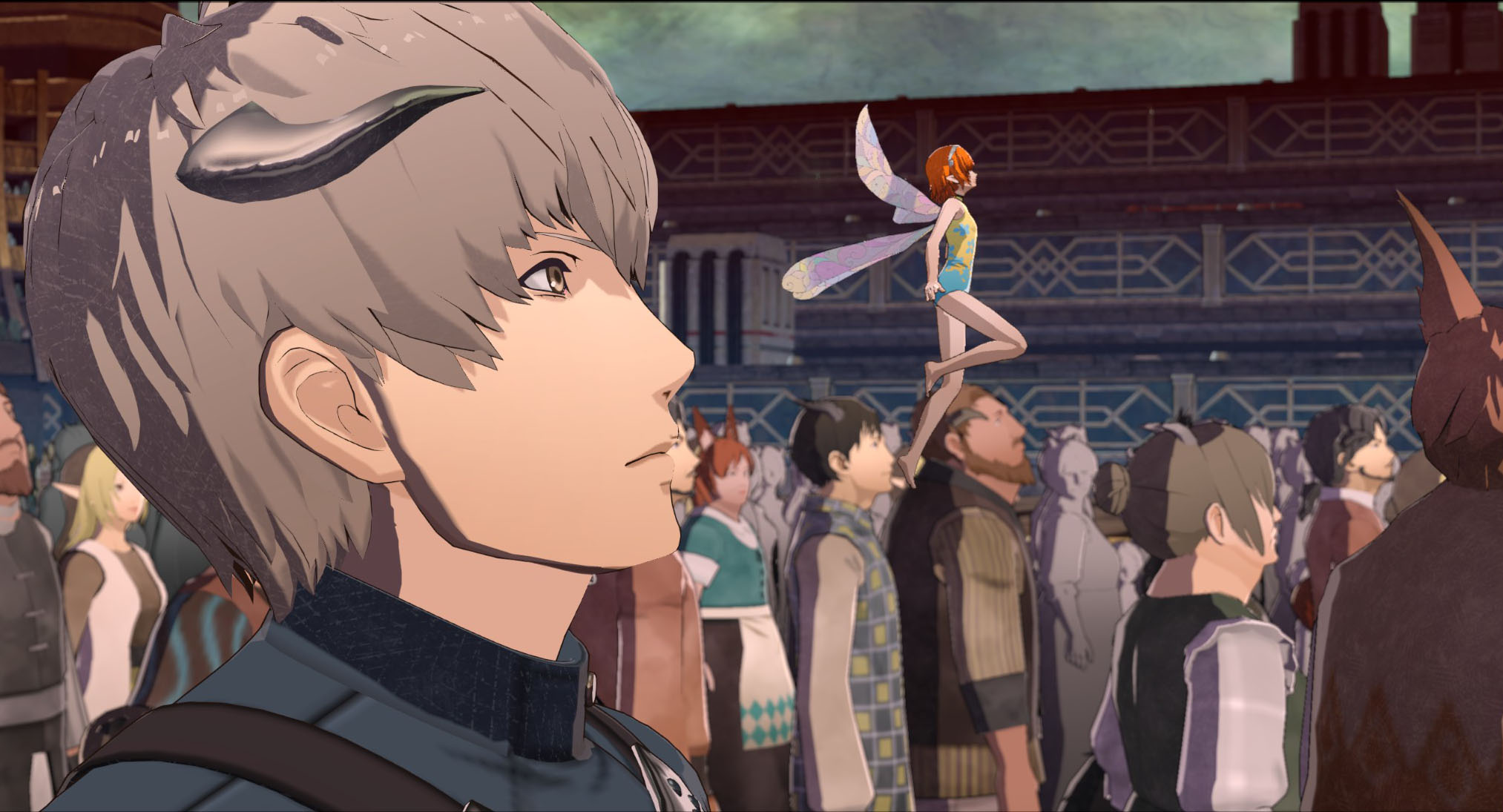
There’s a percentage of people who will go absolutely feral at the first confirmation of information about the next Persona game. The runaway success of Persona 5 converted first-time players into evangelical worshippers at the altar of Altus. (This is even to the chagrin of Shin Megami Tensei fans, who will be quick to remind everyone there was an RPG series before Persona, long before Persona 5 took the series mainstream.)
But we — and I include myself among them — don’t need to keep frothing for Persona 6, because Metaphor: ReFantazio is the successor worthy of the crown and adoration. It’s a finely crafted triumph that isn’t restricted by trying to be another Persona game. By throwing away those trappings, Metaphor: ReFantazio doesn’t have to hew to the same constructions, and its developers can open themselves up a fresh story, instead of another game set in a modern high school in Japan.
Metaphor: ReFantazio drops the modern setting, mostly. It’s set in the fantasy kingdom of Euchronia in the year 785. Our first cutscene starts with the king’s assassination and the ensuing chaos because he has no heir. The king’s only son had been killed earlier by a magical curse cast by a mysterious assassin — or so everyone has been led to believe. In actuality, the prince is still alive, but the malignant curse has put him into a deep sleep. When we first meet our protagonist, he’s on a secret mission, journeying to free the prince from the curse.

Unfortunately, there is a lot of table-setting before the game finds its footing, and its weakest section is the first few hours. I learn about the nine tribes of Euchronia: the ruling tribes that include ram-horned Clemar and elf-eared Roussainte, and lower-caste tribes like the dog-eared Paripus, the bat-person hybrid Eugif tribe, or the three-eyed Mustari tribe, who are chastised for their appearance and their refusal to adhere to the state-sponsored religion, Sanctism. My protagonist is a member of the most feared and misunderstood tribe, the Elda, and everyone I meet on city streets is quick to note my tribe and castigate me by association. The Elda are the only tribe without a distinguishing feature, meaning my character looks like a normal anime boy. (His heterochromatic eyes seem to just be a character design choice, and not an Eldan feature.)
But thankfully, it only takes four or five hours for Metaphor: ReFantazio to kick off. Some ridiculously fantastical things happen that are too good to spoil (and too weird to properly explain!), and we’ve found our plot. There will be an election to replace the king, and anyone can win the throne — no matter their tribe or station — as long as they have the greatest support of the people. The tribal divides and attendant prejudices weigh heavily in this election, of course, as many downtrodden hope this is their chance to fix a system rigged against them.
And where Metaphor does hew to the Persona franchise is in its larger themes: We are made to feel the divide over and over between these tribes, echoing the Persona series’ larger sense of concern for societal injustice and the anxiety it causes. And of course, only the main character and his party can overcome it all, thanks to the protagonist’s pure heart and overwhelming supernatural magic powers. (Magic exists in this world, but everyone else needs tools to cast it, whereas the hero’s power comes from an older magic reborn.) Thus, to save the prince’s life and hopefully return him to the throne, the protagonist throws his hat into the ring to become king, competing in the (probably fixed) trials set out by the church to earn the people’s favor.

The election isn’t the only threat; Euchronia is constantly under attack by monsters, the worst of which are hilariously and bizarrely called Humans — despite looking nothing like the humans we know in our world. All monster designs in Metaphor are detailed, but the Humans are downright horrifying, though Most are ripped from the works of 15th-century Dutch painter Hieronymus Bosch. Each Human comes alive in grotesque ways that surely will etch them into the video game monster hall of fame (and weirdly has made me prioritize seeing The Garden of Earthly Delights in person as a bucket list item).
Every piece of Metaphor: ReFantazio’s art and visual design feels high touch. Characters stride about in brilliant outfits that highlight their tribe’s angel wings or dog tails. There are three styles of character animation — in-world animation, cel-shaded conversation, then a few fully animated sections to highlight the most show-stopping moments — and they’re all gorgeous. I’ve taken so many screenshots of a unique character design, or of my favorite l’il guy party member, or the horizon streaming by while my party rides the giant mechanized contraption that takes them around the kingdom.

There are maximalist menus and transition screens that rip across my display. The party member select menu uses a watercolor style, with close-cropped portraits of each of my party members as I build my squad. Unfortunately that stylish maximalism can sometimes get in the way of figuring out how to change my character’s skills, ability, and loadout. Sometimes the user experience doesn’t quite hit the same high bar, as it feels like too many button presses to jump back after using a healing item. Some information that would have been helpful was also just hard to hunt down, like the type of weapon each character class uses.
But it’s not entirely surprising some UI is jumbled, because Metaphor: ReFantazio has so much more going on with its combat than its Persona cousins. The skills in the game’s turn-based combat are assigned by the game’s own twist on a job system, called Archetypes. In my 67 hours of play, which took me a little more than three-fourths through the full game and its side content, I was able to unlock 25, with a few still hidden or out of reach. These Archetypes are some of the fantasy RPG classes you’d expect (Mage, Warrior, Healer) and some that are total wildcards: a Merchant class, which uses money to do damage; a Summoner class, a mana-burner of a class that summons monsters for high-damage, single-attack spells and has its own system of skill acquisition. The most revolutionary trait of this job system is that any of my party members can be assigned any Archetype; there are no affinities that I can discern, so I can choose to build any party I want.
The turn-based combat really clicked for me somewhere in the first big dungeon, when I changed most of my party members’ Archetypes to suit the new enemy type I began encountering. I also noticed benefits in leveling up Archetypes that had strong Synergy skills, which are when two or three characters team up to do a more powerful attack, skill, or heal. (It costs all of these characters’ resources to perform this action, so while these attacks are powerful, they can quickly drain your party’s MP.) As I progressed, I balanced having each party member learn two or three Archetypes, not including that Archetype’s evolved form that unlocks after earning 20 levels. (Archetype XP is earned separately from each character’s XP, and each character retains their own Archetype XP for each role.) Balancing this progression is made easier by the fact I can choose to inherit between one to four skills between Archetypes, so I can always have a favorite skill for a character on deck even when I have them performing a different role.

The only real wrinkle I’ve been frustrated by is almost all the Archetype skills, even for physical attacks, use magic. My MP for hard-hitting characters is quickly drained, and my plain Jane physical attacks usually can’t compare. Synergy attacks are often the only way to cast spells that hit every enemy, so they sap my MP bar. Overall I found Metaphor stingy with its MP-restoring items. Sometimes the only solution was to stop, rest, and take an additional day to tackle a dungeon.
I’d describe many of Metaphor’s bosses as that sweet spot of good challenge, where the solution was simply to restart from the last save and try a different party configuration. There are plenty of side dungeons scattered across the map with unique bosses, and some really are a challenge that I ended up just returning to later once I’d leveled up more. The only times I felt punished by the challenge was when the game’s weather system would take over. Any adverse weather conditions — rain, snow, extreme heat, sandstorm — give the frustrating effect of nullifying the weakness system. In normal conditions, hitting an enemy weakness adds a turn to your party’s turn counter. Bad weather cancels that out, but I still had to do just as much damage. It usually meant a bigger mana drain as I used more heals or skills during the extended battle, and the XP boost wasn’t always worth the drain. It meant checking the weather forecast (for a small fee) or changing it (for a larger one) became an essential part of the mid-to-late-game gameplay.
I must counter this combat gripe with a bright spot: Metaphor: ReFantazio has one of the better interpretations for how to handle weaker enemies I’ve seen in a turn-based RPG. Any weaker enemies can be taken out in simple overworld, real-time combat. Once my main character takes a few swipes, my party will help, and I also have a dodge roll to avoid taking damage. These fights still provide meaningful enough XP rewards to level my party members and their Archetypes, and sometimes it’s just such a nice break to smash a few weaker enemies. This overworld combat system also means I can soften up some enemies equal to my level before choosing to jump into the turn-based combat, or even knock them out enough to daze them and gain an advantage.

“But surely,” you say, “this is a Persona-like. Where are my friends? Where are the social links? Is it all about punching??” There is absolutely a cast of fantastic, unique characters with tragic backstories ready to have heart-to-heart talks with the protagonist. Metaphor: ReFantazio calls them Followers, as they are followers of your character on his road to the election for the throne. All Followers have an associated Archetype, so boosting your relationship unlocks first that Archetype, then more inherited skills, then new levels of that Archetype. Some non-party member Archetypes also provide other in-game benefits; grifter Alonzo provides discounts at magic shops, and the town commander Bardon randomly sends you care packages with supplies. Their stories are all sad, mostly because they’re all surviving in a very tough world, and as each chapter of their stories unfolds, we see more of their struggles and personal growth.
Some of the more frustrating parts of the Persona social link system feel cleaned up with Followers. Metaphor clearly communicates when someone is ready for their next level with me, and I never encountered a situation where I’d have to waste an afternoon talking to someone only to not actually progress the relationship. There are also only eight ranks in a Follower relationship — instead of Persona’s 10 — all neatly displayed in a pie chart so it was easy to see where I was at. If a Follower relationship wasn’t ready to progress, I could find that out in menus, with a note that one of my protagonist’s five kingly Royal Virtues wasn’t high enough.

This system of Royal Virtues was also much easier to figure out, as my overworld map clearly showed me spots where I could spend a portion of my day earning more Courage, Wisdom, Tolerance, Eloquence, or Imagination. These Royal Virtue levels seemed to mostly gate Follower interactions, but there were a few merchants who required a certain level of Wisdom to buy their goods.
Persona games have trained a certain level of time pressure into me; I need to max out every available afternoon and evening to level up social connections, build attributes, grind out experience. That doesn’t even include the calendar deadlines for each main quest. While Metaphor: ReFantazio has all those elements, there is just a little bit less pressure here. I always felt like I had enough time to do everything. That’s not a problem, though! Instead I don’t feel like I have to complete a main game dungeon in one calendar day. While I still haven’t finished the game, I feel confident enough that I’ll be able to max out my Follower ranks based on the time left, and that’s a huge relief.
Obviously I’ve spent a lot of this review talking about Metaphor: ReFantazio in terms of Persona. While that franchise set a high bar, and I think its audience is primed to like this game, Metaphor’s biggest achievement is just how different it is, both from the Persona franchise and from many fantasy RPGs that have come before. The way I see it is, Persona walked so Metaphor: ReFantazio could extend its gorgeously feathered wings and fly into the sunset.
Metaphor: ReFantazio will be released Oct. 11 on PlayStation 4, PlayStation 5, Windows PC, and Xbox Series X. The game was reviewed on PlayStation 5 using a pre-release download code provided by Sega. Vox Media has affiliate partnerships. These do not influence editorial content, though Vox Media may earn commissions for products purchased via affiliate links. You can find additional information about Polygon’s ethics policy here.
